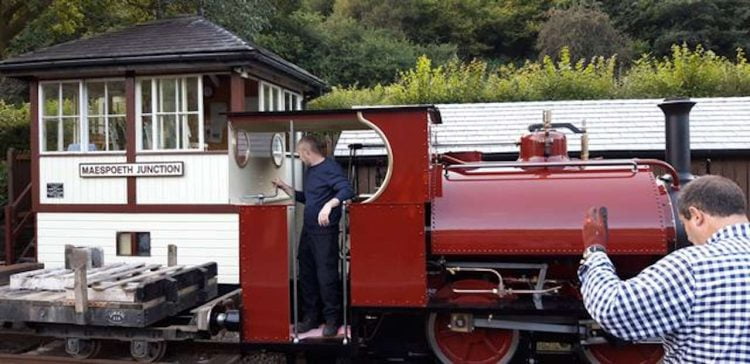A replica of a velocipede once used by permanent way workers on the original Corris Railway in Mid Wales has been built by the railway’s volunteers and is now housed in the museum at Corris station.
The replica velocipede was originally housed in the carriage shed at Maespoeth Junction, but has now been moved to its planned home in the museum.

The velocipede is a four-wheeled wooden-bodied vehicle that is a replica of a vehicle once used by permanent way workers on the railway in its original incarnation.
Work to recreate the vehicle was carried out by volunteers from the railway’s “Tuesday Gang” who are in the process of reviving and recreating the railway’s wagon fleet.
Originally known to former Corris Railway staff as the Manrider, it is thought that the velocipede was attached to the rear of a train which hauled it to where the permanent way staff would be working.
Once the train had reached the work site, the Manrider was detached from the train.

After the train had left, the workers unloaded their tools from the Manrider, and then removed the vehicle’s body and wheels from the rails.
When work had finished for the day, the body of the Manrider was turned through 180 degrees, wheels reassembled, and tools reloaded.
There was no need to wait for a return train for the journey home, as it was downhill all the way.
Powered by gravity, the vehicle and the workers returned home, with speed being controlled by a simple brake acting on one of the four wheels.
The velocipede incorporated a facility that allowed it to be propelled by pedalling if required, but that was not a popular practice because of a combination of very basic axle boxes and the line’s gradients and curves.

One curiosity of the velocipede, and which will now probably never be explained, is that the wheels on one side had six spokes and four on the other.
The Forestry Commission took over the locomotive shed at Maespoeth Junction after the line closed in 1948 and the velocipede was dumped in the inspection pit inside the shed.
Fortunately, the remains were discovered and acquired by the Corris Railway Society who took them to Corris to await reconstruction.
A major difficulty was that there is only one picture of the velocipede, which means the vehicle’s reconstruction has been based on the remains and calculations that could be determined from the photograph.
The remains consisted of two solebars, the brake anchor, and the wheelsets.
The pedalled axle was damaged and both that and the wheels needed to be welded by a specialist in Machynlleth. Unfortunately, it was not helped by an excess of sand inclusion when the original iron was cast back in Victorian times, making it less than perfect.
With just the surviving parts and the photograph to work with, wood was ordered by the joiners in the Gang who set about reconstructing the body. They created the seat and determined its position after some consultation as to where would be the best place to work the pedals.
A new rimmed platform was created as the most likely way to carry the tools, and a new brake was created to suit the 2-foot diameter wheels. Other metal work was also carried out in-house.
Last year, the railway added another vehicle to its fleet of locomotives with the arrival of Falcon built by Alan Keef at Lea in Herefordshire.
The building of Falcon was recognised by a Heritage Railways Association award.
You can find out more about the railway and when trains are running over on the Corris Railway website





Responses